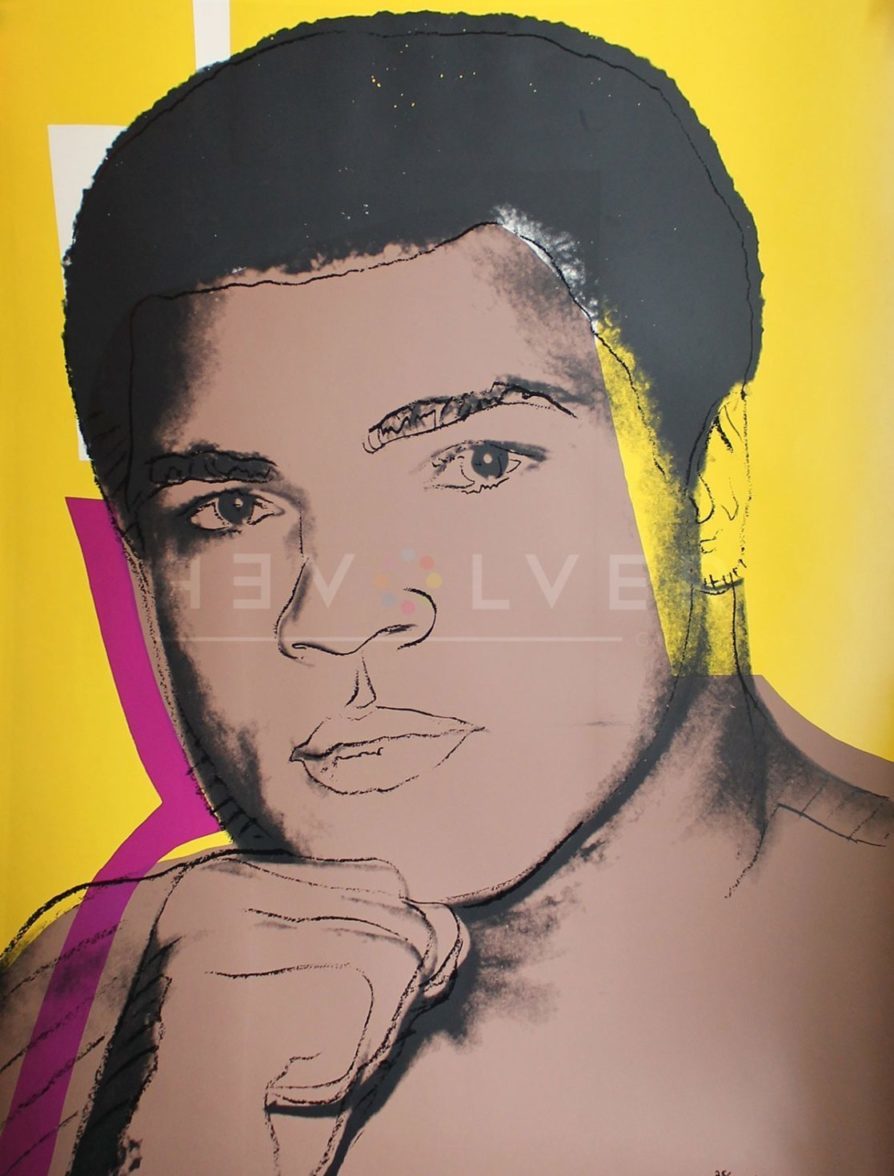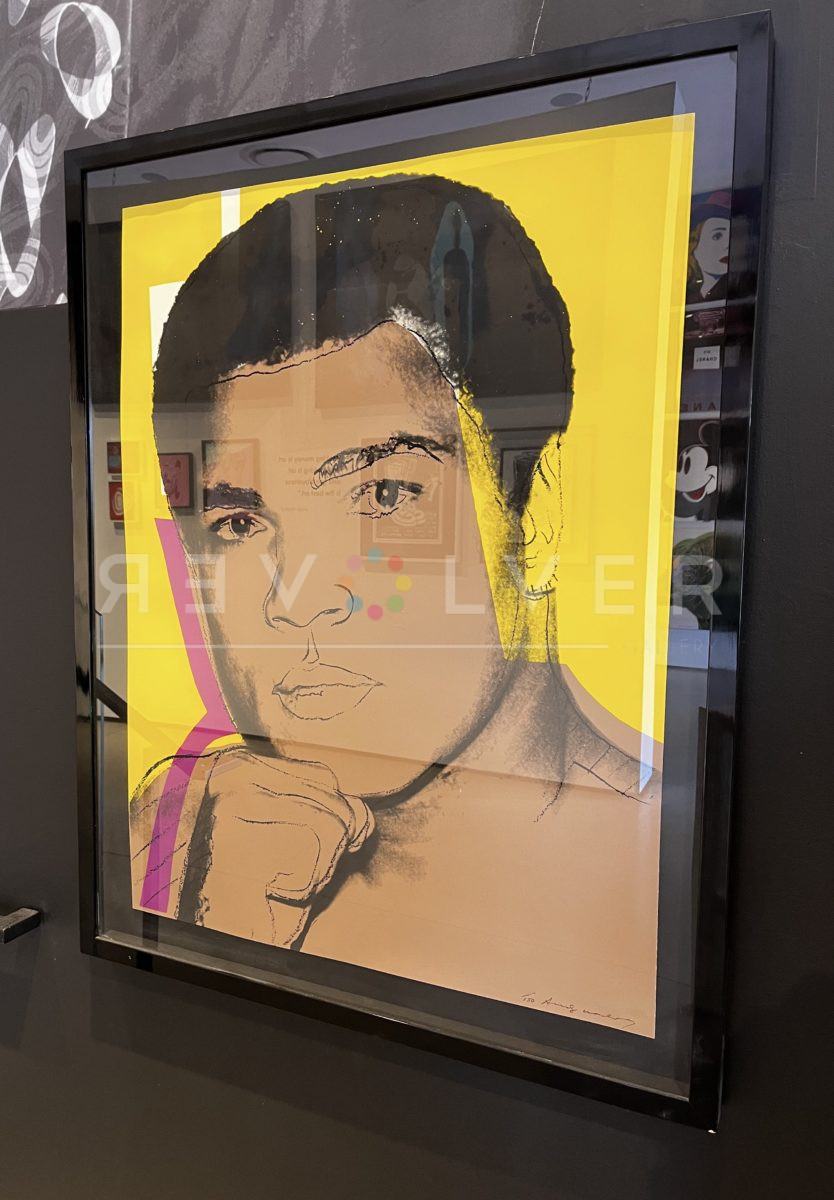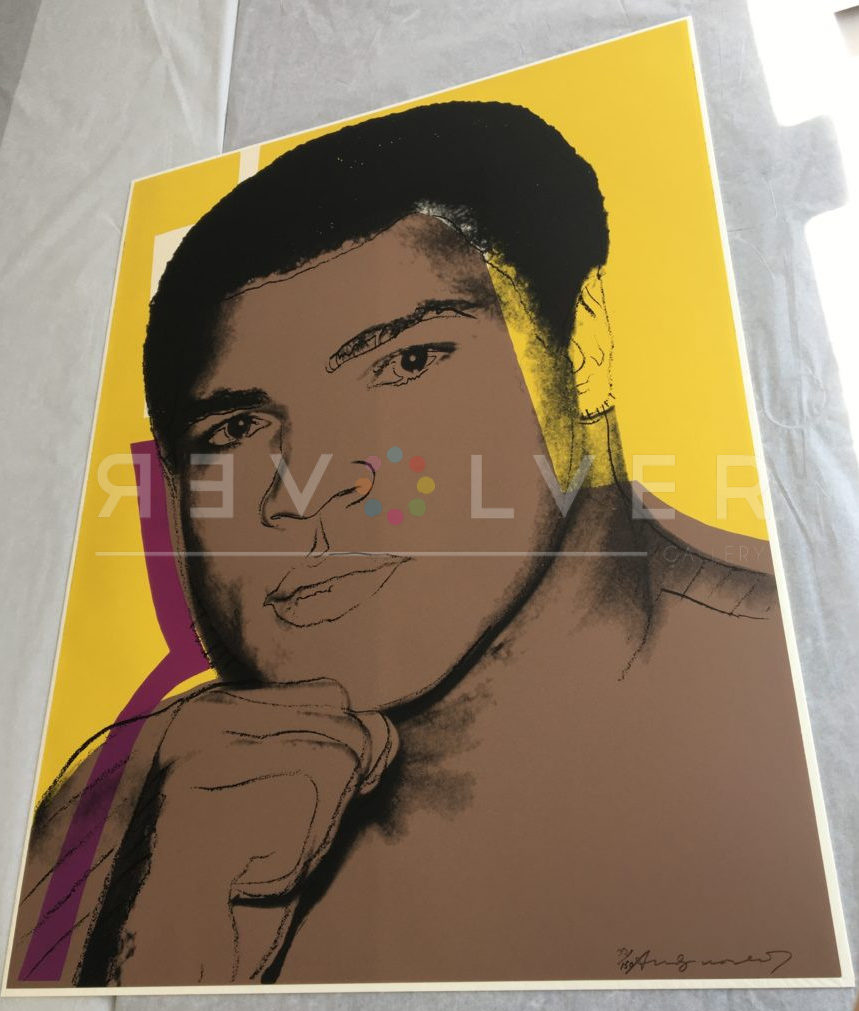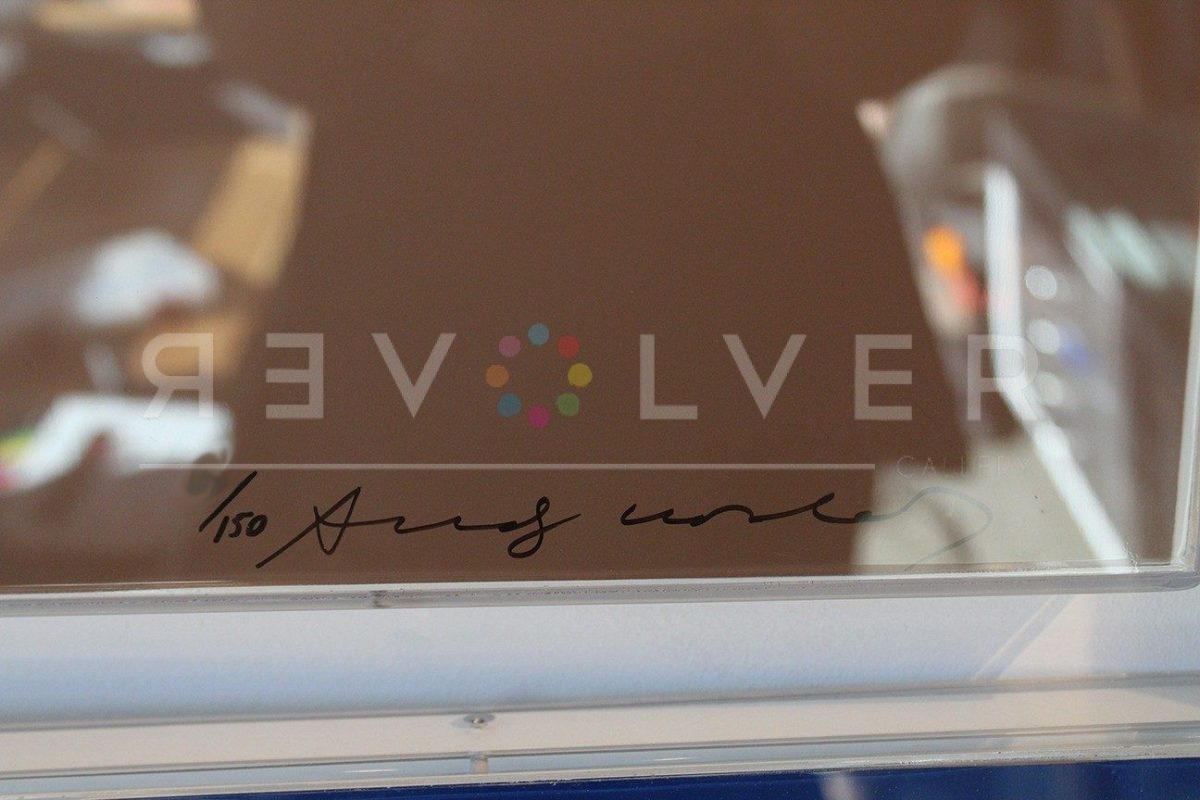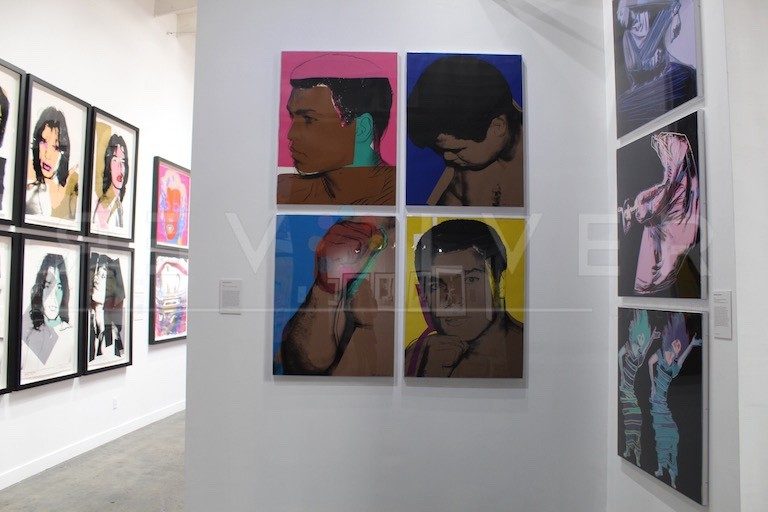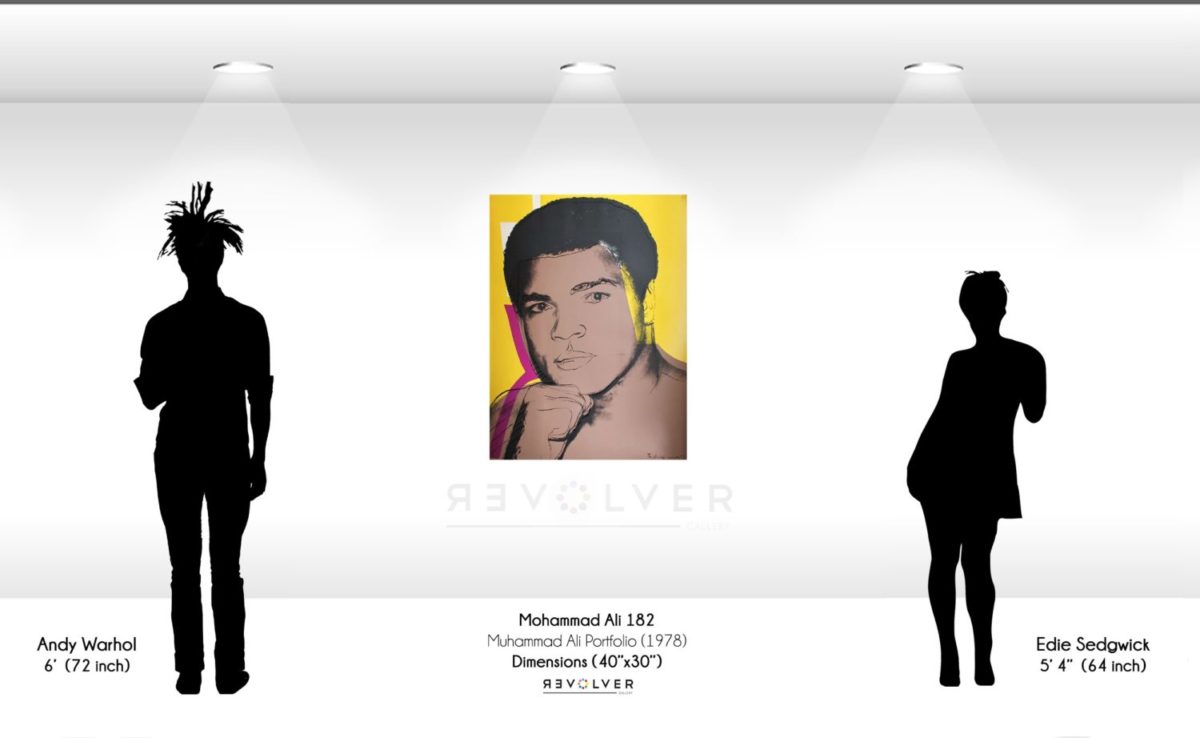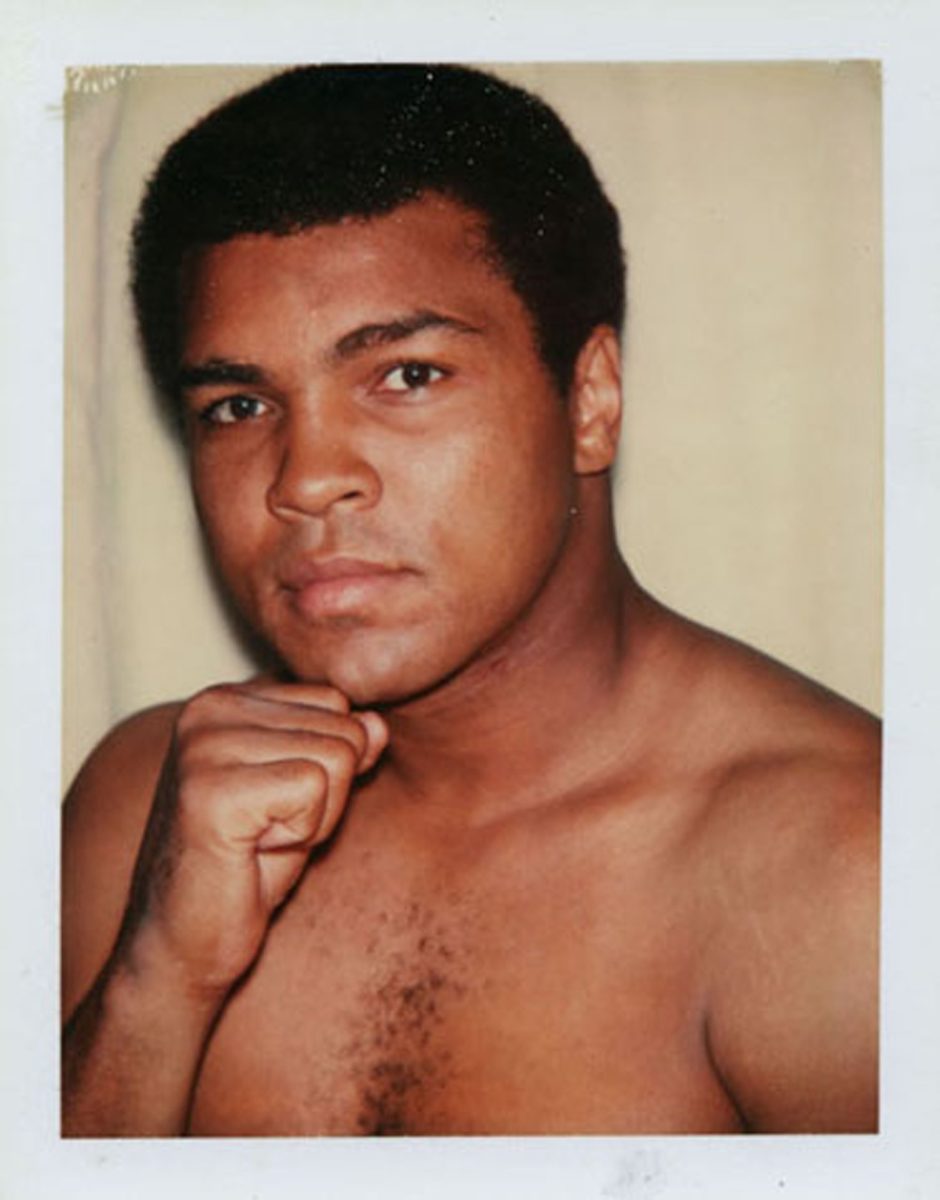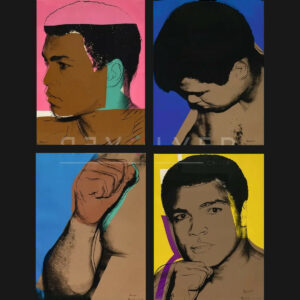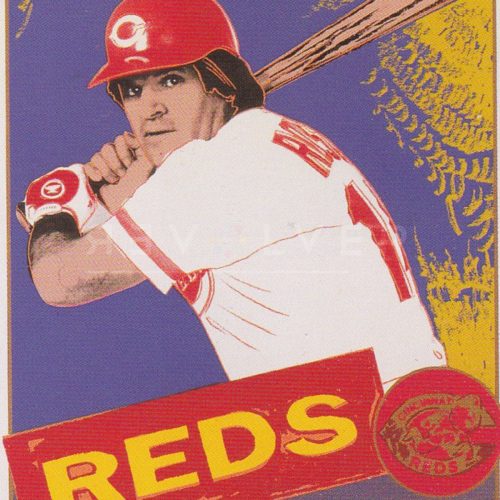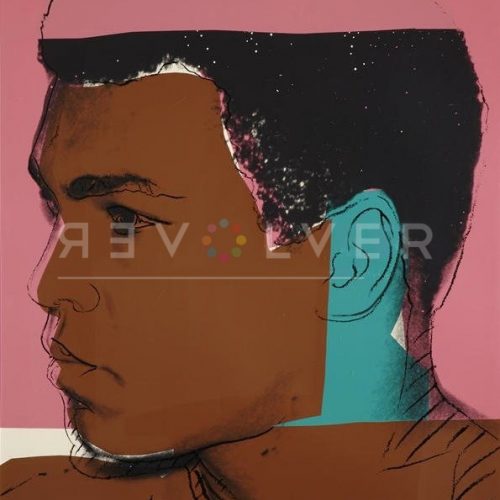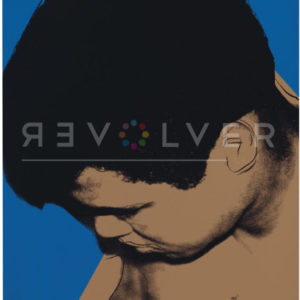Muhammad Ali 182 by Andy Warhol is one of four screenprints from Warhol’s Muhammad Ali series. The series is also a component of his greater Athletes portfolio, showcasing the flourishing athletes of the 1970’s. The work includes big names like Kareem Abdul-Jabbar, Jack Nicklaus, and, of course, the legendary Muhammad Ali. Warhol’s unique artistic expression in Muhammad Ali 182 explores how Ali’s sports persona can become an artistic one, enhancing this legend’s celebrity status and connecting him to a wider audience.
Muhammad Ali 182 honors one of the most iconic athletes of the modern era. His mythical athleticism and civil rights heroism is universally influential and recognizable. Muhammad Ali 182 is a stylized front-facing portrait of the celebrity boxer, who is positioned in the Orthodox boxing stance. A mustard yellow background lightens the tone of Ali’s focused gaze. Fuchsia and white geometric lines highlight his form and sketched features. The sketched shading under Ali’s fist accentuates its combative protection, while drawing attention to his face. Ali’s eyes appear to be the most realistic facial feature. They soften his hardened fighter persona, and give him a more wholesome and human charisma. Although other works in the series, like Muhammad Ali 181, bear an emblematic fist in the same fighting position, Muhammad Ali 182 uses the fist to compliment the star athlete’s face.
“I said that athletes were better than movie stars and I don’t know what I’m talking about because athletes are the new movie stars,” Warhol once said. This quote is especially applicable to Ali as it examines the notion of fame and its broadening horizons beyond actors; chiefly as television began reinforcing the athlete as an identity to be observed and admired. These lines are blurred by Warhol, who catalyzed evolving perceptions of celebrity by framing athletes like Muhammad Ali in the same context as his glamorous celebrity muses.
Though Warhol had a hard time getting a hold of him, he eventually invited Andy to his training camp in Pennsylvania for the photoshoot. This elusiveness likely increased Ali’s godlike mythos in Warhol’s eyes, enabling him to depict the boxer with a greater resplendence than athletes of the past.
By the time art and sports enthusiast Richard Weisman commissioned the series, Muhammad Ali had won his third heavyweight championship title. This win became the capstone of Ali’s professional fighting career. Almost unbelievably, Ali won this championship following a three year forced hiatus after refusing to fight in Vietnam. During that time, Ali’s civil rights activism developed rapidly, and he achieved more media fame for his words than his fists. Muhammad Ali 182 may connect to this motif, as the legendary boxer puts up his fists in a fight for justice.
Andy Warhol created Muhammad Ali 182 at the height of Ali’s global stardom. In the print, the candid actualization of his athletic dominance and civil rights perseverance leaves audiences awestruck by the face of a true celebrity.
Photo Credit: Andy Warhol with Muhammad Ali at Ali’s training camp in Deer Lake on August 18, 1977. Photo by Victor Bockris.

